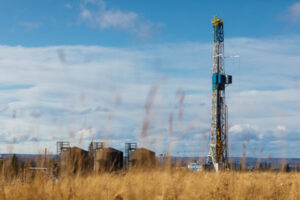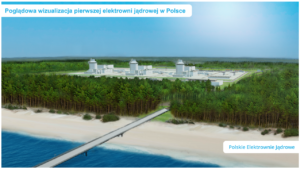Whatever happens to the Nord Stream 2 project – Poland and the Baltic Pipe project partners are doing their job. There is a good chance that the new gas corridor will guarantee security and competitiveness to Poland and its neighbors, writes Teresa Wójcik, editor at BiznesAlert.pl.
The commonly used term Baltic Pipe covers a much wider investment than the pipe on the bottom of the Baltic Sea itself. It is a strategic transmission project aimed at „creating a new gas supply corridor from Norway to the markets of Denmark and Poland.” And depending on demand – on the markets of neighboring countries.
Efficiently, no delay, with reverse
Yesterday (18.07) Piotr Naimski, government plenipotentiary for strategic energy infrastructure, presented the state of implementation of this investment in the parliament. – The schedule is implemented without any delays and it is very unlikely that the deadline for completing the investment on October 1, 2022 would be in danger – emphasized Naimski. He also added that the Baltic Pipe, according to the European Union energy law, will provide a reverse – this means that gas can flow from Poland to Denmark and Sweden.
Asked by deputies at yesterday’s meeting of the Parliamentary Energy and Treasury Committee, the minister assured that there was also an „alternative plan”. Members’ fears are justified because the investment is expected to start trading in October 2022, as the contract signed with Gazprom in 1996 expires. The government declares that the long-term contract with the Russians will not be extended. Securing by an alternative plan is therefore included. However, Naimski did not provide particulars.
Five elements of the bus
Baltic Pipe, as Piotr Naimski reminded, is to consist of five elements. A pipeline from the Norwegian shelf running at the bottom of the North Sea and a combination of the Norwegian transmission system with Danish one. An extended Danish transmission system (on land). A gas compressor station located in the eastern part of Zealand. The gas pipeline on the bottom of the Baltic Sea connecting the Danish transmission system with the Polish system. And what is very important – new and expanded existing transmission infrastructure in Poland with interconnectors on the borders with the Czech Republic, Slovakia and Ukraine. The gas pipeline is to operate for 50 years.
Gray zone – and negotiations with the Danes
The bus will have a capacity of 10 bcm per year, the diameter will be 900 mm. The section on the seabed is about 275 km long. At the same time its course is not yet decided. The recommendation was presented by the Danish company Ramboll. Two departures from Denmark on the island of Zealand are possible: from Faxe North and from Faxe South. There are three options for entrances on the Polish coast: in Niechorze, in Rogów and in Gąski. The final choice of the route will be determined in the decisions of the authorities of Poland, Denmark and Sweden. Currently, intensive talks are being held with the Danes regarding the so-called gray zone, i.e. the area through which the gas pipeline is to pass, and where Poland and Denmark have not set the limit of their exclusive economic zones. This is the area between the Danish island of Bornholm and the Polish coast with an area of approximately 3,6 thousand square km. This area is „caught up” by the northern variant of the route of the gas pipeline along the seabed recommended by Ramboll. It would run through the exclusive economic zone of Sweden as well as Polish and Danish maritime areas. Naimski stressed that „the case of exclusive economic zones has been unsettled for over twenty years” and on the occasion of the implementation of Batlic Pipe, the Danes asked for its solution. The minister hopes that talks on this matter will be finalized at the turn of August and September. The head of Gaz System, the Polish gas transmission system operator, Tomasz Stępień emphasized that the construction of the gas pipeline is more difficult on land than at sea.
The decisive contract – „around November”
The implementation of the project is to be done by a consortium composed of the Polish Gaz-System and the Danish Energinet.dk. However, the position of both operators is different, Gaz-System is the only Polish operator of the gas transmission system. Energinet.dk deals also with the transmission of electricity in Denmark. In September this year a strategy of entering into contracts and awarding contracts related to construction and auxiliary works in the implementation of the Baltic Pipe will be adopted, which is a continuation of negotiations planned in connection with the framework agreement signed by operators last year. Talks are underway and details are being clarified. The contract on the construction of the Baltic Pipe, which is the final decision to start work, will be – as Naimski announced – signed „around November”.
Obtaining EU funding for construction will not be easy
The Baltic Pipe project is being implemented as a European Union project and is part of infrastructure programs for the EU energy and fuels sector. It is on the PCI – Projects of Common Interest list, which is embedded within the framework of the Baltic Energy Market Interconnection Plan (BEMIP). The aim of BEMIP is to develop the integration of markets in the Baltic countries, thanks to investments in international connections between the electricity industry and gas industry. The financial support from Connecting Europe Facility (CEF) for project work amounted to 51,4 million euros – minister stressed that this is not a large amount compared to the projected gas pipeline costs, but proves that the Baltic Pipe is taken seriously by the European Commission. MP Krzysztof Gadowski asked if CEF could participate in the costs of the pipeline itself. Naimski replied that talks were held with the EC on this subject, but he did not want to talk about the amount of quotas. „They are much larger than funds for design work. Obtaining funding from CEF will not be easy, because it is an instrument essentially dedicated to infrastructure projects that are economically unjustified important for security. – And here is the problem – in the case of Baltic Pipe, the open season procedure clearly indicated that the Baltic Pipe gas pipeline is economically justified. It is profitable for both partners: Poland and Denmark – emphasized Naimski.
The most important – prices for the final recipient
The positive side of this investment is to enable the integration of Scandinavian (Norwegian and Danish) markets with the Polish market, followed by neighboring markets in the region (Czech Republic, Slovakia, Ukraine). Thanks to this, the exchange standard will be completely unified, and the price differences will be reduced. It will also affect the stabilization of natural gas prices in the region. In the case of a growing volume of gas trading, transmission fees will also decrease, which may positively affect the price for the final recipient.
Declining prices together with the growing potential of gas supply (local market and neighboring markets) may have a positive impact on the increase in gas demand in the area of investment impact. It is already forecasted that the demand for gas will increase to 17 bcm in Poland by 2020 from the current 15,5 bcm.
On the Polish side, the Baltic Pipe gas pipeline is to constitute one element of the Northern Gateway. The second element is to be the planned and pre-confirmed capacity expansion in two stages of the LNG terminal existing in Świnoujście. The first stage is to increase the capacity by 2,5 bcm up to 7,5 bcm. The second stage is to increase the capacity to 10 bcm.








